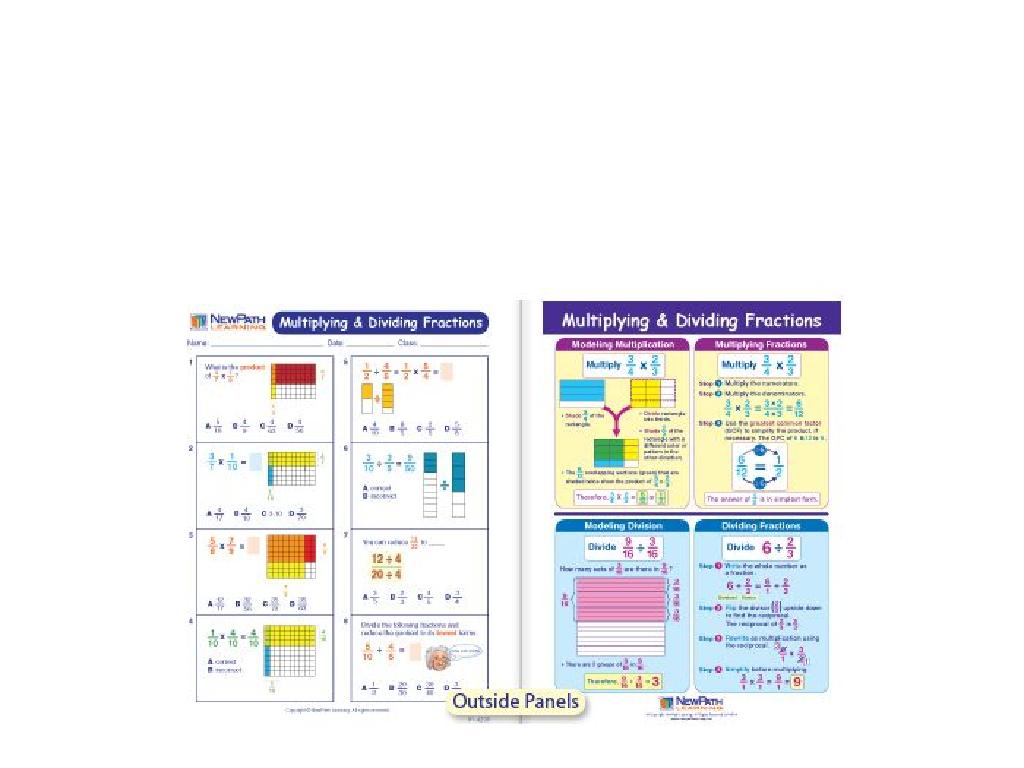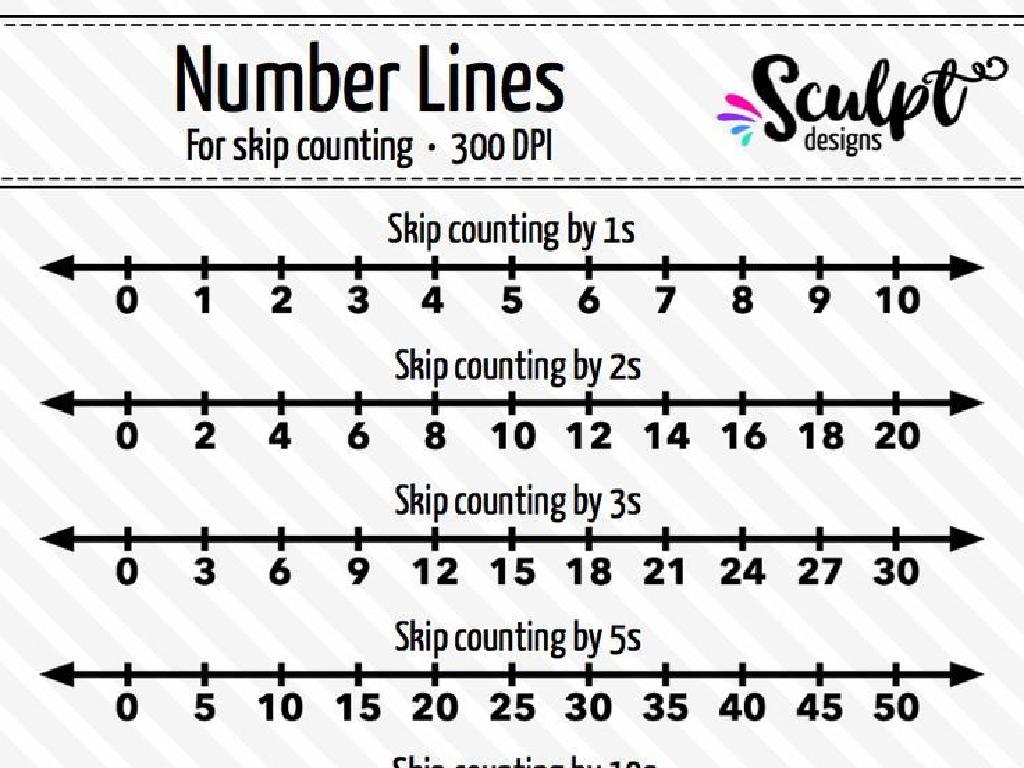Explore Chemical Structure And Properties: Food Flavors
Subject: Science
Grade: Seventh grade
Topic: Chemical Reactions
Please LOG IN to download the presentation. Access is available to registered users only.
View More Content
Exploring Food Flavors and Chemical Structures
– What are flavors?
– Flavors enhance our food experience and are perceived through taste and smell.
– The five tastes
– Sweet, sour, salty, bitter, and umami are the basic taste categories our taste buds recognize.
– Sensory perception of flavors
– Taste, combined with smell and texture, determines our flavor perception.
– Chemical structure in flavors
– The molecular makeup of a substance greatly affects its flavor profile.
|
This slide introduces the concept of food flavors within the context of chemical structures and reactions. Begin by discussing what flavors are and their importance in our daily lives, not just for enjoyment but also for survival, as they can indicate the nutritional content of food. Explain the five basic tastes that our taste buds can detect and how each contributes to the overall flavor of food. Emphasize the role of our senses, particularly taste and smell, in perceiving flavors. Lastly, touch on how the chemical structure of molecules in food affects their flavor, setting the stage for a deeper dive into the chemistry of taste. Encourage students to think about their favorite foods and what flavors they detect in them.
Chemical Reactions in Cooking
– Defining a chemical reaction
– A process where substances change into new ones with different properties.
– Everyday cooking reactions
– Baking bread: yeast ferments sugar into CO2, making dough rise.
– Heat’s role in food chemistry
– Heat can cause Maillard reaction, browning food & enhancing flavor.
– Exploring flavor changes
|
Introduce the concept of chemical reactions as the transformation of substances into new ones, emphasizing the change in properties. Provide relatable examples such as the fermentation process in bread making and the Maillard reaction, which is responsible for the browning of food when cooked, adding flavor and texture. Explain that heat is often a catalyst in these reactions, altering the chemical structure of food. Encourage students to think of other examples of chemical reactions in cooking and how these reactions affect the taste, appearance, and nutritional value of food. This will help them understand the science behind cooking and the creation of flavors.
The Chemistry of Taste
– Influence of chemical structures
– Certain molecular structures correspond to specific tastes.
– Taste and smell connection
– Smell enhances flavor perception; most of what we consider ‘taste’ is actually smell.
– Role of taste receptors
– Taste receptors on the tongue detect dissolved compounds.
– Signal transduction process
– Signals from receptors are sent to the brain to identify flavors.
|
This slide explores the intricate relationship between chemical structures and how we perceive taste. Students will learn that the shape and composition of molecules in food can trigger different taste sensations. They will also understand that taste is closely linked to smell, and that the combination of both senses contributes to the overall flavor experience. Taste receptors on the tongue play a crucial role in detecting taste, as they interact with food molecules and initiate the signal transduction process, where the taste signal is converted into a nerve impulse and sent to the brain for interpretation. Encourage students to think about how different foods taste and smell, and how these senses work together to create the flavors they enjoy.
Exploring Sweetness: Sugar & Sweeteners
– Natural vs. artificial sweeteners
– Compare sources and effects on health
– Molecular structure of sugar
– Glucose & fructose rings in sucrose
– Understanding sweet taste
– Taste receptors interact with sweet molecules
– Health implications
|
This slide aims to explore the concept of sweetness in the context of food flavors and chemical structure. Begin by comparing natural sweeteners like honey and sugar with artificial ones like aspartame, discussing their different sources and potential health effects. Dive into the molecular structure of sugar, particularly sucrose, and how its glucose and fructose components are arranged. Explain how sweeteners taste sweet because they interact with taste receptors on the tongue, which send signals to the brain. Discuss the health implications of sweeteners, including dental health and blood sugar levels. Encourage students to think critically about the sweeteners they consume and how they might affect their bodies.
Exploring Sour and Bitter Flavors
– Acids contribute to sour taste
– Citric acid in lemons gives a sharp sourness
– Bitter compounds in foods
– Quinine in tonic water provides a classic bitter flavor
– Protective role of bitterness
– Bitterness can signal toxins, deterring consumption
– Interaction of taste and safety
|
This slide delves into the chemical structures that give food its sour and bitter flavors, which are key components in our perception of taste. Acids, like citric acid found in citrus fruits, are responsible for the sour taste we experience. Bitter compounds, such as quinine found in tonic water, add complexity to flavors and often serve as a warning for potentially harmful substances. The protective nature of bitter flavors is an evolutionary adaptation to help organisms avoid toxins. Discuss the balance between enjoying these flavors in food and the instinctual caution they can trigger. Encourage students to think of examples of sour and bitter foods and consider why these flavors might be important.
Umami: The Savory Taste
– Understanding umami
– Umami is one of the five basic tastes, known for its savory flavor.
– Glutamate’s role in umami
– Glutamate, an amino acid, is responsible for the umami flavor.
– Foods high in umami
– Examples: soy sauce, mushrooms, aged cheese.
– Chemical properties of umami foods
– These foods have high levels of glutamate and nucleotides.
|
Umami is a Japanese term that translates to ‘pleasant savory taste’ and is considered one of the five basic tastes. It is characterized by the flavor of glutamates, especially monosodium glutamate (MSG), which is found naturally in many foods. Glutamate is a type of amino acid that, when present in food, enhances flavor and gives the umami taste. Common foods that are rich in umami include soy sauce, mushrooms, tomatoes, and aged cheeses, all of which have high levels of glutamate and nucleotides that contribute to their savory flavor profile. Understanding the chemical properties of these foods helps students grasp how our taste buds interact with certain molecules to perceive different flavors. Encourage students to think of other foods they believe might be rich in umami and to explore the chemical structures that contribute to this distinctive taste.
Flavor Enhancers and Modifiers
– How flavor enhancers function
– Enhancers boost existing flavors without adding a new one
– Common enhancers in cooking
– MSG, salt, and sugar are widely used to intensify taste
– Flavor modifiers’ effect on taste
– Modifiers can alter the overall flavor profile of a dish
– Exploring taste perception
– Understanding how our senses perceive complex flavors
|
This slide introduces students to the concept of flavor enhancers and modifiers in the context of food chemistry. Flavor enhancers work by amplifying the existing flavors in food, often without contributing a distinct taste of their own. Common examples include monosodium glutamate (MSG), salt, and sugar, which are used in various cuisines to heighten flavor. Flavor modifiers, on the other hand, can change the perception of taste by interacting with taste receptors, sometimes making sour foods taste sweet or vice versa. Discuss how these substances can influence the taste of food and encourage students to think about the sensory experience of eating. This will lead to a deeper understanding of the chemical properties of food and how they affect our enjoyment of different flavors.
Class Activity: Flavor Experiment
– Conduct a taste test with different flavors
– Determine chemical properties of flavors
– Sweet, sour, bitter, salty: What makes them different?
– Discuss tasting experiences
– Share findings with the class
|
This class activity is designed to engage students in exploring the chemical structure and properties of food flavors through a practical taste test. Provide a variety of flavored solutions such as sweet (sugar water), sour (lemon juice), bitter (unsweetened cocoa), and salty (salt water). Students will taste each and try to identify the chemical properties that correspond to each flavor. After the taste test, facilitate a discussion where students describe their experiences and hypothesize why each flavor tastes the way it does based on its chemical makeup. Encourage them to use descriptive language and chemical terms learned in class. Conclude by having students share their findings, promoting a collaborative learning environment. Possible activities include comparing natural vs. artificial flavors, or predicting flavor combinations that would result in a new flavor experience.






